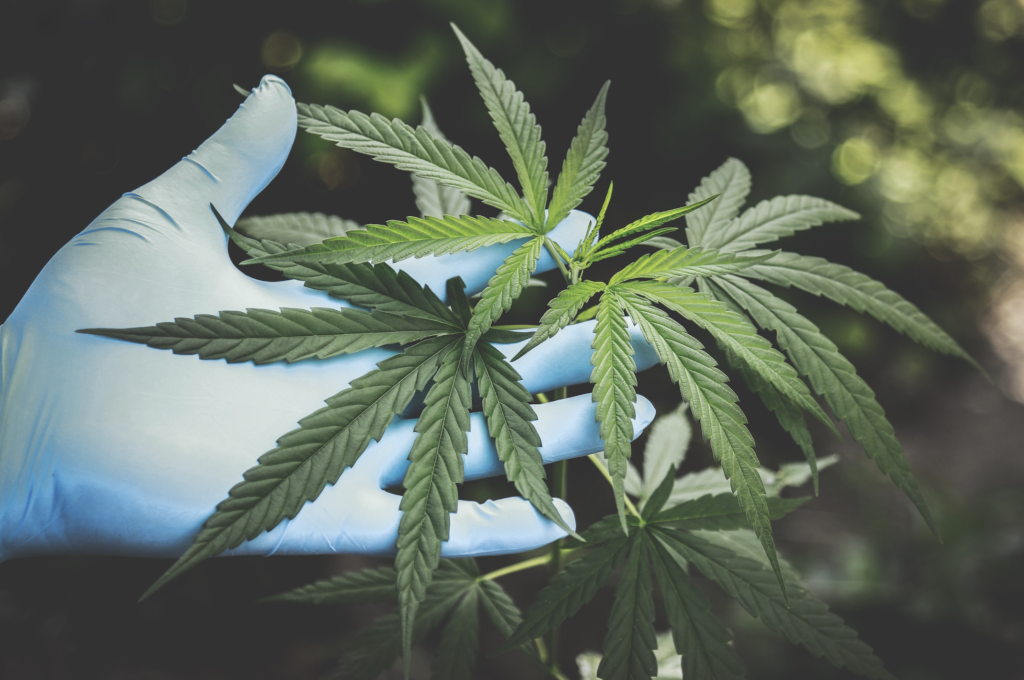
Is This Progress? Three Scientists Weigh in on Cannabis Research
When cannabis was legalized in 2018, the decision to introduce a plant-specific research licence was praised by scientists in the space. Finally, it seemed that with the Cannabis Act, cannabis research could become more accessible to those eager to study it, and the evidence doctors demanded would be around the corner.
I covered this hope for new research in an op-ed for the New York Times in November 2018. Titled “Canada’s Grand Cannabis Experiment Has Set Scientists Free,” it (naively) made grandiose claims that scientists would no longer be at risk of “lacking access to specimens,” and suggested scientists would be free to “openly pursue a greater quantity and quality of cannabis science than ever before.”
Boy, was I off.
Over the last few weeks I found myself wondering if readers—more notably scientists—were still holding out for the freedom the article had guaranteed. Now, nearly three years later, it seemed as though the promise of the cannabis research licence had proven hollow.
In choosing to atone for my inaccurate prediction, I spoke with three leading cannabis researchers in Canada to find out just how the Cannabis Act has impacted cannabis science, and whether the introduction of the research licence has proven more problematic than practical for scientists.
Canada’s Cannabis Research Ecosystem
“I was hoping we’d see a sort of renaissance of cannabis research, and a lot more of the gaps being filled in, but that hasn’t really come to fruition yet,” says Jonathan Page, an adjunct professor of botany at the University of British Columbia and a senior advisor to Aurora Cannabis. Page, the leader of the cannabis genome project, was interviewed for my story in 2018 and had the same ambitions for cannabis research that I did.
While he says certain areas of study, like the social impacts of cannabis use are being thoroughly examined, plant-focused research like the kind Page focuses on has been slower to take off. Health Canada has also been slow to approve licences, although scientists have come to expect long wait times from the oft-understaffed public health agency.
“What I envisioned, and maybe I was being too optimistic, was that we would have this kind of cannabis research ecosystem developing, similar to what we have with other valuable crops,” Page says.
Canola serves as a good example, an industry where research occurs in universities in several areas across the country and is funded by a combination of provincial governments and federal agencies (such as Agriculture Canada). That research overlaps with research being conducted by private companies. Page says it’s this combination of entities and the way researchers move back and forth between them that fosters the research landscape he was hoping to see in the cannabis industry.
“That really is how things move forward quickly, and that does not exist for cannabis yet,” he says.
Page says increased financial barriers have also made it more difficult for institutions to take on cannabis science and research. The cannabis-specific research licence improves upon former legislation in that scientists are no longer required to complete a criminal record check, but it does require an extensive security plan. And while university studies are often funded by grants, these grants don’t come close to covering the added cost of the increased security measures required by the new legislation.
‘As if We’re Dealing With Some Kind of Radiation’
A neuroscientist and pharmacologist at the University of Calgary, Matthew Hill has studied the endocannabinoid system for several years and is currently examining the neurodevelopmental impacts of cannabis vapour exposure in rodents. While he says cannabis research is in a better state now than it was before 2018, he doesn’t mince words when he describes his experience with it, calling the first year of the licence “an absolute disaster.”

“It was incredibly unclear what the expectations were, and they seemed to be very dynamic and changing,” he says, noting that in some cases applicants approved for licences earlier were not subject to the same limitations around sample supply as applicants who were approved for licences later on.
“I have a colleague whose licence allows him to just walk into any Ontario Cannabis Store and buy products from the store itself,” he says, “whereas for my licence, and mostly everyone I know, we’ve all had to designate a single Health Canada-approved producer.”
Hill says it took a year, but after enough feedback from researchers, Health Canada created a document that outlined the research licence application process in an attempt to simplify the process. Still, Hill says it remains rather onerous.
“As a frame of reference, prior to legalization for me to have THC or any cannabinoid in my lab, I simply had to fill out a CDSA exemption application. It was a pain, and I had to renew it every year, but it wasn’t that big of a deal, and the amount of paperwork was pretty trivial,” he recalls.
Under the new research licence, Hill says his application ballooned to 26 pages and required extensive photography of the lab, including an aerial shot of the university, floor plans of the rooms where cannabis would be examined, and a layout of the lab with attached descriptions pertaining to storage and disposal, “as if we were dealing with some kind of radiation.”
“It felt very weird to me, because I was under the impression as part of legalization it would just turn into what alcohol is,” he says, noting that while there is still some control over the study of alcohol in a lab, one is not required to apply for a licence to do so.
“I would have assumed that once cannabis moved out of being a prohibited substance into that same space where alcohol is, the legalities around that would have changed.”
While the goal may have been to make things easier for researchers, Hill says it’s actually made things more difficult. He puts less blame on Health Canada and more on the bureaucratic wording of the Cannabis Act for the increase in hurdles, which have bled into other areas outside of the laboratory.
Hill is also the executive director of the Canadian Consortium for the Investigation of Cannabinoids (CCIC), and said after legalization, coordinators of the organization’s annual cannabis science conference were required to age-gate the event, paying for security guards and “treating it as if we were in a bar.” Industry partners had sponsored it but there was no promotion of cannabis at the event.
“We went through extensive interactions with both Health Canada and a lawyer to try and understand this, because there was no precedent for it,” Hill says. “It was quite frustrating.”
A Shift in Focus
Today, Hill says some of the issues associated with Health Canada, particularly the delay for licence approvals, have improved after blowback from the research community.
But other significant problems, such as having access to consistent samples, remain. Even for those who have licences, Hill says sourcing a reliable supply of cannabis is challenging because many companies have abandoned their research and medicine efforts.
“The amount of money coming in to buy product [for research] is a drop in the ocean compared to the amount of money that’s coming in from recreational use, so there’s very little motivation for cannabis companies to do the analytics we require to understand what’s in the product,” he says.
“What the research community needs to be able to do is access a consistent stream of cannabis products that allow us to do research in a replicable way,” he says, pointing out that the inherent differences in cannabis from one batch to the next—even of the same strain—make it more challenging than any pharmaceutical drug to study.
“Even if you try and control for THC, the data you get can’t actually be aggregated or even directly compared necessarily because you’re dealing with a different composition of substances.”
Like Hill, Page recognizes the complexity of cannabis from a research perspective, and acknowledges the shift in focus away from medical research and towards the recreational market.
“There was a period when medical cannabis was the only game in town, when companies thought they would produce a product that would go through clinical trials and end up being tried by doctors,” Page says. “It’s like the golden era of medically focused cannabis research is in the rearview mirror right now, which is too bad.”
While some cannabis companies continue to forge ahead with research, most have moved away from plans for randomized clinical trials and towards real-world evidence, which involves the analysis of people’s medical or “therapeutic” cannabis use.
The Trouble With Clinical Trials
Mark Ware is the chief medical officer at Canopy Growth Corporation and a clinical researcher who has studied cannabis for more than 20 years. Like his colleagues, Ware agrees that while some areas of cannabis research, such as public health and real word studies, have done well, other areas, like clinical research, have struggled.
“The challenge with [real world studies] is that they tend not to have control groups and there’s no placebo, so drawing lines between the drug itself having direct effect on outcome gets muddy,” says Ware. “The randomized controlled trial is a way of trying to eliminate all that noise.”
But Ware says companies that are ready to conduct such trials, including Canopy, are unable to do so after a September 2020 clarification to Health Canada’s clinical trial requirements effectively stated that companies that want to study the effects of their products on humans can only do so if their products are of pharmaceutical quality.
“This poses a problem because companies who are making products for the markets under the Cannabis Act aren’t able to provide the data to the pharmaceutical grade, which would allow them to be used in trial,” he says. “Even studies that were funded, initiated, and approved couldn’t proceed because the product couldn’t meet Health Canada’s requirements.”
Since the stakeholder notice came out last fall, Ware says Canopy and other producers have spoken with Health Canada to see if these requirements can be amended. He said they’ve had favourable feedback as recently as January, however the regulations have yet to be updated.
“It’s not just the desire of the companies that’s waning or changing,” he says. “It’s also been adjustments in the regulatory framework for companies to provide products for clinical trials.”

In order for Health Canada to understand the potential for clinical research to inform patients and doctors about the safety and efficacy of cannabis for different conditions, the agency needs to be more open to facilitating the introduction of products that can be put into those trials, according to Ware.
“It’s a real partnership between the patient, the doctors, the industry, the regulator, and the academic community,” he says, also highlighting the Canadian Institutes of Health Research (CIHR), which funded a number of trials that are unable to proceed.
In Ware’s mind, the solution to the current lack of cannabis research requires open minds, good dialogue, and a will from stakeholders to push it forward.
“Cannabis is not like alcohol or tobacco or pharmaceuticals,” says Ware. “That’s kind of why we have the Cannabis Act: because it’s its own thing, so regulating how we study it in medical and non-medical use requires some new thinking.”
Are We Still World Leaders in Cannabis Research?
There was much talk in 2018 of legalization making Canada a “world leader” in cannabis research. While we still sit near the top, there is some agreement that we haven’t exactly capitalized on being the first G7 nation to legalize cannabis, at least from a scientific standpoint. Thanks to extensive application delays, an excess of red tape, and potential supply issues, cannabis legalization hasn’t brought the mountains of evidence we hoped for.
Ware recognizes that even with these issues, Canada still remains in an advantageous position globally to move good cannabis science forward.
On the other hand, “I think in some ways, Canada’s slow rollout of research funding and licences has put us at a disadvantage,” says Page. “We thought we could make a lot of gains and become this sort of dominant power in cannabis science, so we’ve kind of lost the edge.”
“If you’d have interviewed me a year ago, I’d have said [the main problem] was the licences,” says Hill. “Now, I’d say it’s access to product.”
While clinical trial efforts remain hamstrung and supply issues continue, Page does point out that it’s not all bleak: In October 2020, a UBC research project in partnership with Aurora Cannabis received federal and provincial funding of $4.2 million from Genome Canada and Genome BC to study something he’s longed to look into for decades.
The breeding project, led by UBC researchers Loren Rieseberg and Marco Todesco, will study enhanced cultivars and focus on resistance to powdery mildew.
“That’s a win for Canada. The science is super high-quality, and it has economic benefit as well,” he says. “Plus, I wanted to get that funding 20 years ago, so to finally get it is awesome.”

